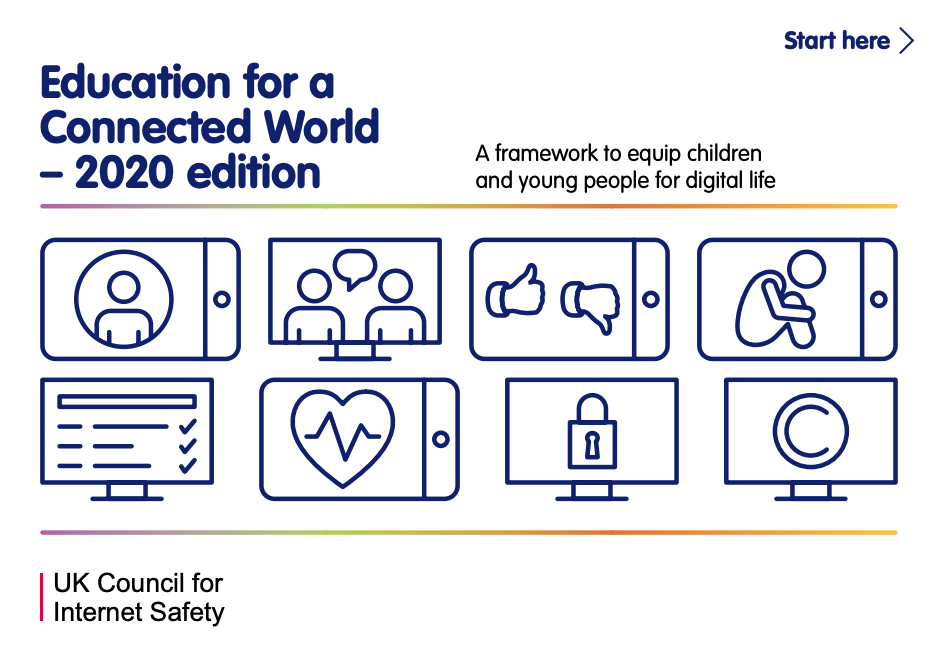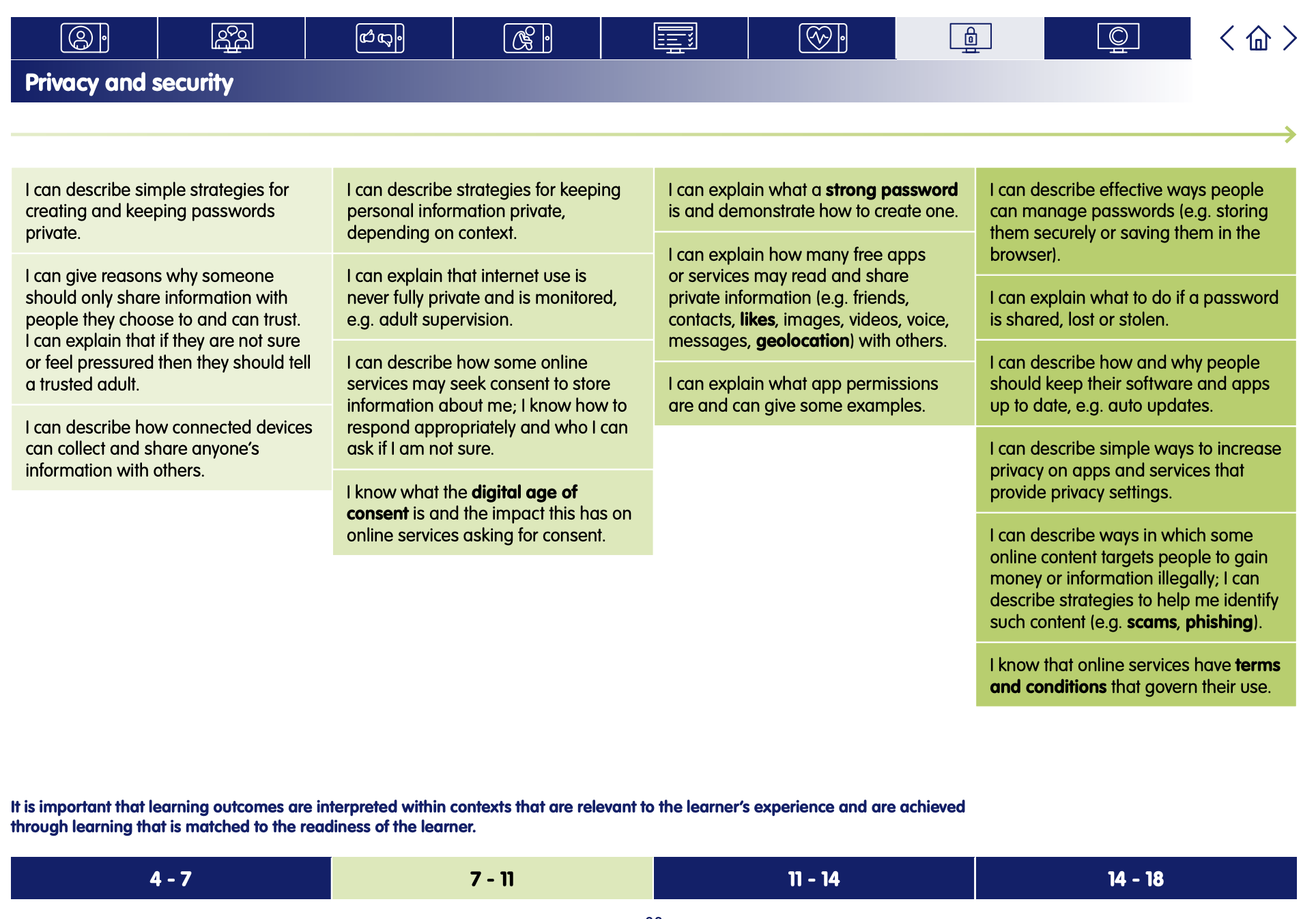Password Power-Up
Digital Literacy and Online Safety (Y4) - Lesson 2
A note about this lesson

This lesson is taken from Common Sense Education’s excellent Digital Citizenship curriculum. Their resources are shared for free under A Creative Commons Attribution- NonCommercial- NoDerivatives 4.0 International License.
You can find the original resources HERE.
Objectives
- Define the term "password" and describe a password's purpose.
- Understand why a strong password is important.
- Practice creating a memorable and strong password.
Lesson Resources
- Writing paper or notebooks
- Password Power-Up - Lesson Slides
- Password Power-Up - If...Then...Scenarios Student Handout
- Password Power-Up - If...Then..Scenarios Student Handout (TEACHER VERSION)
- Password Power-Up - Power-Up Your Password Student Handout
- Password Power-Up - Power-Up Your Password Student Handout (TEACHER VERSION)
Lesson 1 - Your Rings of Responsibility
Lesson 2 - Password Power-Up
Lesson 3 - This Is Me
Lesson 4 - Our Digital Citizenship Pledge
Lesson 5 - The Power of Words
Lesson 6 - Is Seeing Believing?
Links to Education for a Connected World.
This lesson from Common Sense Media's Digital Citizenship curriculum links to the following strands from the Privacy and Security section of the Education for a Connected World framework.
Introduction - Pssst ... What’s a Password?
Stronger, more secure online passwords are a good idea for everyone. But how can we help kids create better passwords and actually remember them? Use the tips in this lesson to help kids make passwords that are both secure and memorable.
Before the lesson: As an optional activity before the lesson, have students play the Password Protect game in Digital Passport™ by Common Sense Education. This will help introduce key concepts of this lesson. To see more, check out the Digital Passport Educator Guide.
Ask: What is something in your life that you take steps to protect? Why and how do you protect it? (Slide 4)
Have students think-pair-share, and then call on students to share. Examples might include hiding a diary, using a bike lock, keeping a toy in a safe place, etc. Clarify that one of the ways people protect something is by restricting who can access it.
Ask: Let's think about when we use devices, like a phone or computer. How do you limit who can access something that you want to protect, and why would you limit access?
Examples might include password-protection, device-lock, fingerprint scanner, not letting others use the device.
Say: One of the most common ways to protect your devices and information online is by using a password. A password is a secret string of letters, symbols, and numbers that you can use to restrict who can access something digital. Some passwords, however, are stronger than others because they are harder for someone to figure out. Let's investigate why strong passwords are important and how you can make sure yours are strong. (Slide 5)
Evaluate - Uh-Oh! If... Then....
Distribute If … Then Scenarios Student Handout. Tell students that they will be doing a jigsaw activity to understand WHY passwords are important.
Divide the class into five groups and tell students this is their "home" group. Call on a student to read the handout directions aloud. (Slide 6)
Assign each group one of the scenarios from the handout. Allow groups to work for five to seven minutes.
Re-divide the class into new groups so that each group includes at least one student from each scenario (1, 2, 3, 4, and 5). If necessary, there can be more than one person from a particular "home" group in an "expert" group. Allow five to seven minutes for each "expert" to present while the rest of the group takes notes. (Slide 6)
Reconvene and ask: Based on these scenarios, why do you think it's important to have a strong password? Take turns sharing your idea with your partner. Allow one minute to pair-share.
Invite students to share their answers. If necessary, prompt students to refer directly to the scenarios and to the consequences that would happen if someone's password was compromised. Examples could include loss of money, people knowing your private information, identity theft, and other unknown future consequences.
Create - Power-Up Your Password
Say: The consequences we just talked about might seem scary. But there is something you can do to make sure no one can ever guess your password. Here are some important steps to power up your password.
Distribute and project the Power Up Your Password Student Handout. Say: One way to make a strong password is to start with a memorable phrase. A phrase is a group of words that go together and are easy to remember. We're going to do a practice round together using the phrase "There's no way I'm kissing a frog." So we've already completed step one, which is to come up with a phrase. (Slide 7)
Invite a student to read step two. Ask: What word would our example phrase make? Invite a student to answer and add "tnwikaf" on the projected handout.
Repeat steps three through five: reading the step aloud, calling on students to answer, and completing the "Practice Round" section of the handout. Student answers will vary as students will choose to capitalise different letters and insert different numbers. If necessary, clarify that students can insert numbers anywhere in the password.
Say: Now you will follow these steps to come up with a password of your own. Work independently to complete the "Your Turn" section of the handout. Allow students five minutes to complete the handout.
Plenary - Password Tips Notes
Project the Password Tips and read each one aloud. Direct students to fill in the blanks on their handout as you read them. For the last tip, clarify that a symbol is a character other than a number or letter, such as #, !, or @. (Slide 8)
Say: As you get older, having a strong password will become even more important. Passwords will help you protect your social networking profiles when you are in high school, keep your grades private when you are in college, and protect your bank accounts and online store accounts when you are an adult.
Have students complete the Lesson Quiz. Send home the Family Activity and Family Tips.
Extension Activity:
Facilitate a related Breakout EDU game that was co-created with Common Sense Education, called Lip Sync Revenge! You will need to create a free account in order to access the game and related resources.


